A preliminary look at the origin and development of Tuguegarao’s most popular noodle dish
Perhaps for many Filipinos, particularly the frequent travelers and the so-called foodies, the first thing that might come to their minds upon the very mention of Tuguegarao, is the city’s culinary and cultural symbol, the pansit batil-patung.
Many have had their curiosities piqued, have fallen in love with the dish, and have testified to its unique flavor, as the pansit’s growing popularity is getting apparently more widespread. Each time the batil-patung is encountered, either through feature stories in all sorts of mass media, or through the actual first-time consumption of the dish, one is introduced to the specific physical elements that define the pansit – the Tuguegarao-made noodles and soy sauce, the ground carabao beef, pork liver and vegetables, a wide array of special toppings, and the signature egg-drop soup and onion side dishes. Most people see it as it is today, even Tuguegaraoeños themselves.
Now, on social media, amid the fairly recent downplaying of history as an academic discipline, a timely question can now be put to light – have the people of Tuguegarao wondered how the batil-patung came to be? Unfortunately for the now seemingly growing anti-scholars among the population, knowledge on the origins of the batil-patung and its evolution cannot be attained ever through mere “tsismis” nor opinions.
Noodle dishes or pansit ultimately came from the Chinese, the centuries-old trade partners of the ancestors of the Filipinos, Cagayanos included. A popular etymology for the word “pansit”, linking it to the Hokkien language, can easily be checked on the internet.
Most probably, the time when noodles started to become truly indigenized is during the Chinese migration to the Philippines, which intensified centuries ago during the Spanish colonial period when Manila was rising as a lucrative melting pot for trade and culture. Of course, Chinese migration did not end in the capital.
All over the country, there are now hundreds of pansit dishes, some of which are now famously pan-Philippine, while others are unique to specific localities. As for Tuguegarao, the city is presently home to three local specialties – the batil-patung, the reportedly older sinanta, and the pansit Cabagan, which originates from nearby Cabagan, Isabela and has a colorful and older history of its own.
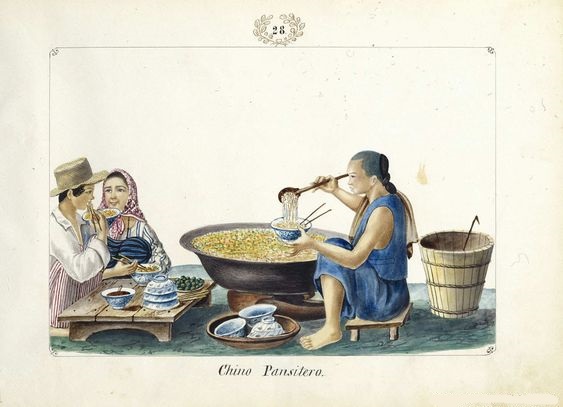
As regards the batil-patung specifically, looking into its history is not an easy endeavor as there is no existing written historical narrative nor prior literature related to it. One has to start from rock bottom – from the generation of people who saw and experienced, or “tasted” even, the pansit’s development. As such, there is no primary method of study other than doing countless interviews and cross-checking among former customers of pansiterias of old.
The 1960s
It seems that the starting point of batil-patung history can be identified as being sometime in the 1960s. Although pansiterias were already present in Tuguegarao during the pre-World War II and early post-war years, these were mostly run by the Chinese and were located along Calle Commercio, the street that passes through the town’s business center. The 1960’s can be considered as a spring for both the natives’ adoption of and adaptation to the noodle business, when local families opened their own pansiterias.
If the development of Tuguegarao’s “native” commercial pansit could be chronologically divided into stages, the ‘60s was the time when the dish, or pansi’ as pronounced in Ibanag, was in its “pre-batil-patung” stage (Tuguegarao is mainly Ibanag and Itawit, with the former being concentrated in the Centro or poblacion, and nearby barangays). The pansit back then, though can be considered as ancestral to the batil-patung, seems to be a totally different dish. One thing that is common, though, between the 1960s pansi’ and the batil-patung is the noodles or miki.
Tuguegarao miki is commonly known to have two types. The first type is the home-made or do-it-yourself (DIY), made using a “kabayu”, a traditional noodle dough presser derived from Southern Chinese technology. The pressed and folded dough is cut using a knife, thereby resulting into noodles that are uneven and non-uniform in thickness. The second type of miki is round and even, as they are cut mechanically, and are popularly sold by the Lao To’s.
With regard to the ‘60s, many middle-aged and senior Tuguegaraoeños remember two pansiterias in terms of popularity, both of which were located in a single block in the centro. These are Puring’s, operated by the Soriano family at the spot along Gomez Street where the Red Line bus station was once located, and Balao’s along Calle Commercio (Bonifacio Street), in front of the “Plasa” or market. There might be earlier ones, if only reliable interviews with older respondents could allow. Nonetheless, according to some storytellers, these two are among, if not the first to become well-known in Tuguegarao, which was just a small town back then.
Puring’s pansi’ was said to have been unique due to the use of hibi or dried shrimplets as an umami flavorizer – a trait interestingly shared with the old version of the pansit Cabagan. Other usual ingredients were minced carabao meat (known today as “cara-beef”) and pinatuvu or mung bean sprouts. Usually, the pansit at Puring’s, as well as that of its contemporary, Balao’s, had generous amounts of soy-based sauce, but not so much for them to be classified as soup dishes. However, the pansi’, especially at Puring’s can optionally be seko or “dry”, with the sauce being served separately.
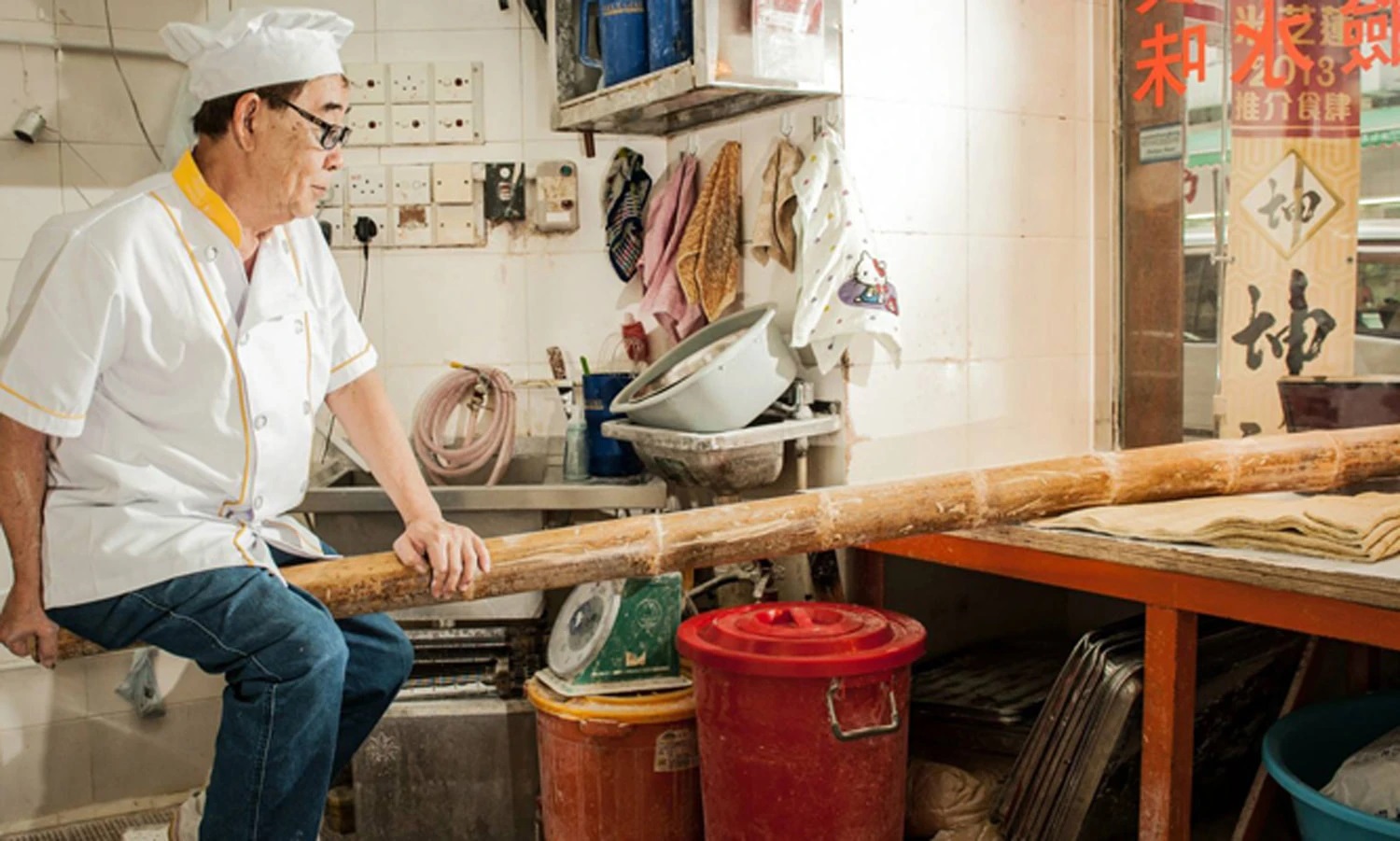
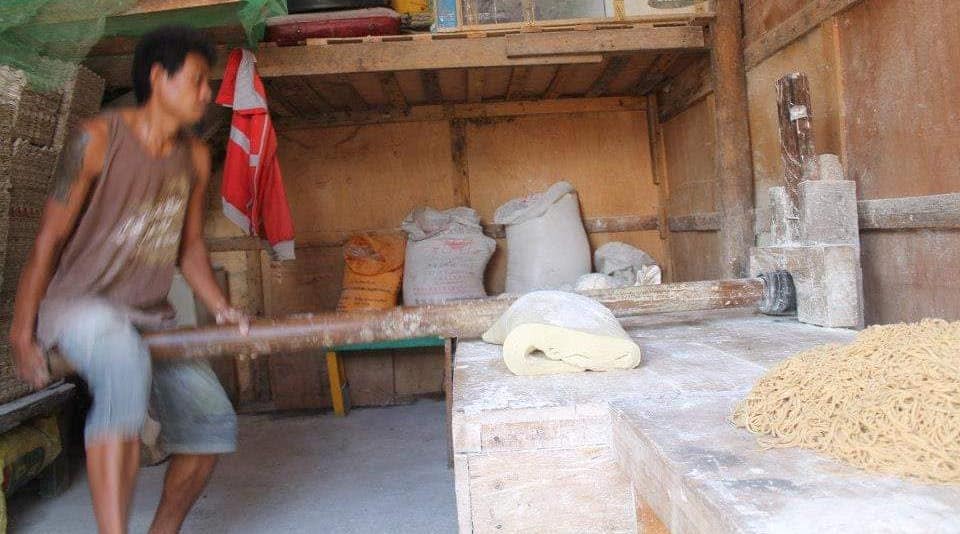
Balao’s, which was primarily a carinderia in contrast to Puring’s, an actual pansiteria, prepared their pansi’ a little differently. Hibi was not incorporated and viands that were sold separately at the eatery were also used as pansit toppings – lechon karahay (litsong kawali), igado, among others. Depending on the customer, luffa or kabatiti was cooked along with the noodles.
Beyond the ingredients like home-made miki, sauteed minced cara-beef, and the notably generous soy-based sauce, another thing common between the two is something that interviewees are first to recall usually — since the pansit back then was largely treated as a viand in itself, they were also usually ordered to go (take out). When buying pansit, which cost around 25 to 30 centavos at that time, droves of customers brought their own containers, usually cooking pots and large pitchers.
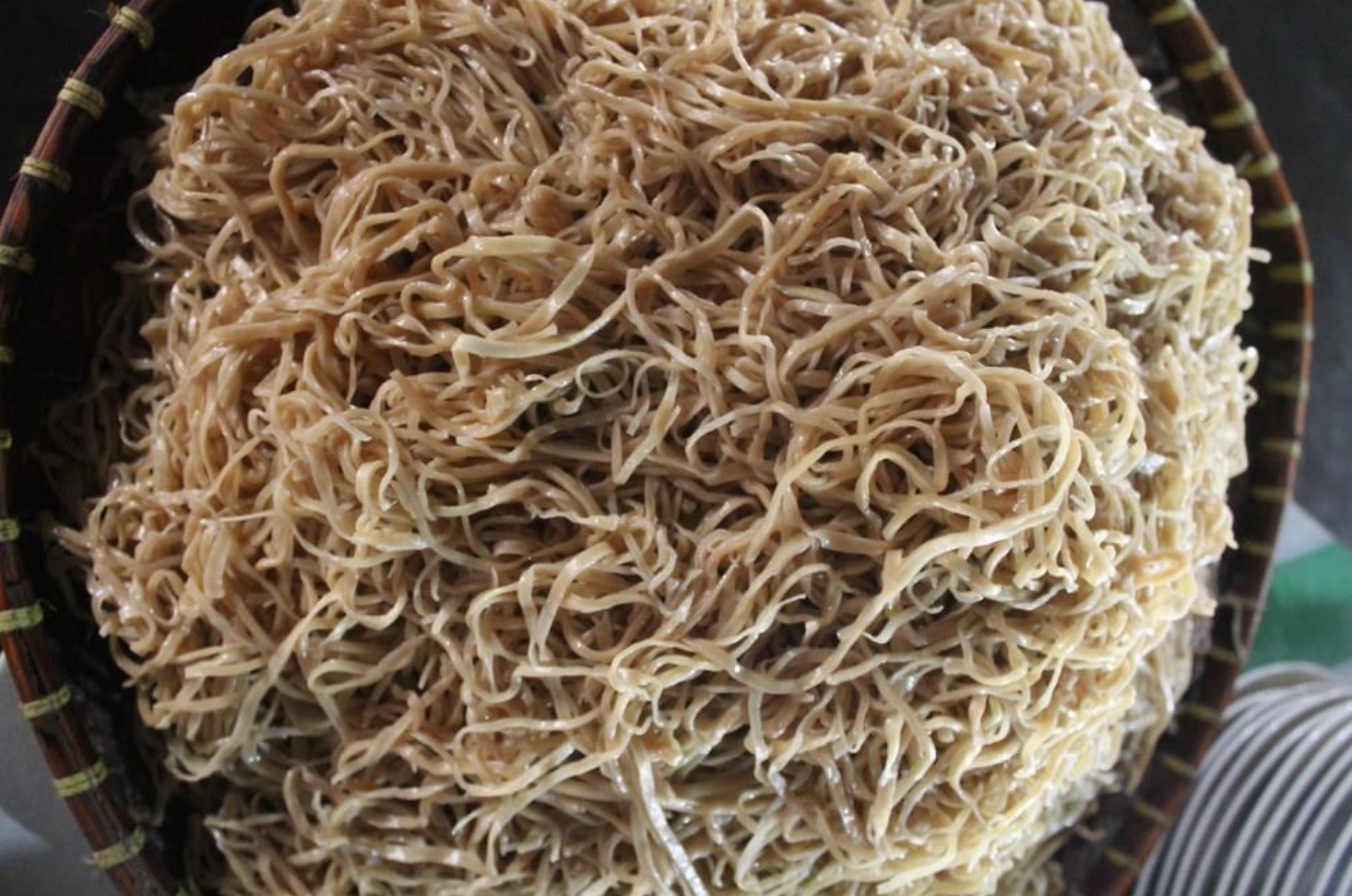
Puring’s and Balao’s would eventually close down, with the latter’s cooks, remembered by some as “Tonyo” and “Berto”, moving on to work at the then newly opened Olympia Kitchenette, while the Soriano family carried on at a different location after operating for a few more years. The “pansit tradition” and evolution was continued on to the 1970’s by pansiterias such as Islaw’s, Teyo’s, Agustin’s, among others. They served the same style of pansi – minimalistic, full of sauce, and often served as takeouts in containers or pitchers brought by customers.
Teyo’s and Agustin’s were located on the south side of the Plasa. Olympia Kitchenette (later, Hotel) and Riverside Canteen stood two blocks away, the former near the corner of Washington and Blumentritt Streets and the latter near Gomez and Rizal Streets.
The 1970s
This decade marks the booming of pansiterias/carinderias that served single-order, dine-in pansit in the areas around the Plasa. A notable spot was the stretch of Burgos Street, between its corners with Gonzaga and Washington Streets. Some people remember this “pansit hub” on the north side of the Plasa as “likuk na Philippine Lumber” (the area behind the Philippine Lumber), using the hardware store along Calle Commercio as a landmark. Numerous pansiterias mushroomed in the said area, with those frequently remembered being Danao’s, Iringan’s (owned by “Lakay Sendong” who started in the ‘60s), Bassig’s, Cito’s, Max (Escobar family), Baquiran, Taguinod’s or Peter’s. Another was Darauay’s, which started out as a cafeteria and carinderia. Some of the proprietors of these establishments like Lakay Usto Danao, Cito, and Taguinod reportedly worked previously in older eateries like Balao’s or Islaw’s before starting their own.
The style of pansit during this time, especially in the late 70’s, is what we may refer to as “proto-batil-patung” – the middle phase between the saucy pre-batil-patung and the early batil-patung of the late 80’s and 90’s. Back then, mung bean sprouts were becoming a standard ingredient, and the poached egg, or what people know today as the patung started to appear as an optional topping. The miki used by many pansiterias was still the more economical DIY kinabayu, in contrast to the Lao To-style noodles used in Kusina ni Nanay’s “Tagalog-style” pansit, and Myrose’s pioneering pansit Canton. Both establishments, with the former actually being located within the pansit center, and the latter, at the Hotel Delfino only a block away, are evidence that commercial pansit in Tuguegarao back then was actually diverse, and not just limited to the indigenous pansi’. Moreover, pansit, as prepared by the Ibanag, was not only confined in Tuguegarao; other towns apparently had their own versions, like Solana and Camalaniugan, where cara-beef and viands were similarly used as toppings.
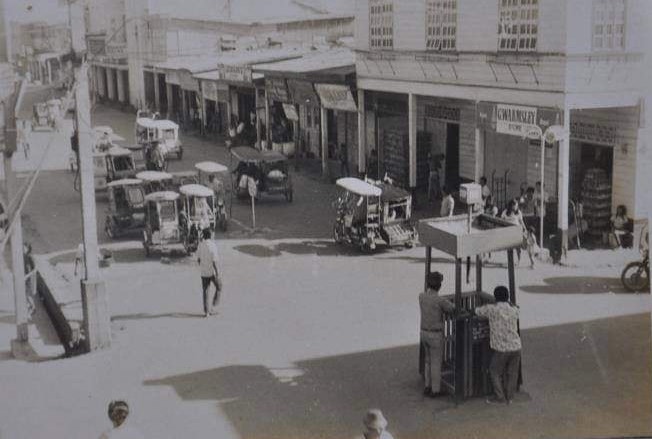
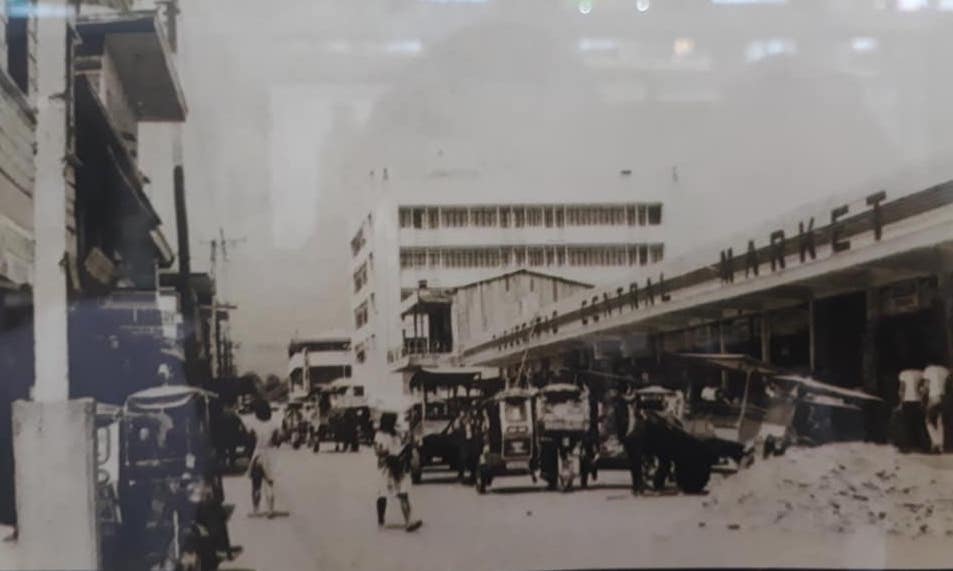
The use of carabao meat as a principal ingredient was still prevalent and by then, was already a default element of the dish as it was considered cheaper than beef from cattle. During that time, cara-beef was still minced using knives upon large acacia chopping blocks; there were no meat grinders then. As regards the sauce, it was lessened in the pansit itself, and was instead served separately like in the seko style. The separate “sauce”, by this time, was starting to look like the batil soup side dish of the modern batil-patung. The sauce, cooked from carabao bone broth, had bits of egg left in it, which came from the poached eggs that were simmered beside the miki in a single large silyasi or wok.
This was also the time that the cheap signature Malabon brand of seasoning was reportedly reaching widespread use, as opposed to the older Marca Ubas or Silver Swan soy sauces. Labeled as a “tawyu” or soy sauce, the Malabon brand is actually fish sauce with dark caramel coloring; it became one of the distinguishing flavorizers of the batil-patung in the succeeding decades. The umami flavor, though, was largely derived from MSG through old brands such Golden Lion, and later, Ajinomoto.
The 1970s also saw the onion side dish become a staple element of the Tuguegarao pansit-eating experience, after originally being a by-request condiment in the past decade. Similar to some pansiterias in the present, onions were self-served by customers. Pansiterias had chopping stations were clients prepared the onions and calamansi themselves.
Beyond the physical composition of the late 1970s pansi’, which by then already cost 1 peso to 1.50, a peculiar facet of the pansiterias was largely remembered by storytellers. These were the jukeboxes. Many pansiterias had these until the 1980s, where customers would drop 25 centavos when selecting the songs that they liked (such as songs by the Beatles or The Carpenters perhaps).
Around the turn of the decade, pansiterias like Balisi’s (later known as Cherry’s) were the first to operate away from the Plasa, followed by Triangle and a few others in Barangay Ugac, away from the Centro entirely.
The 1980s and 1990s
The 1980s could have been the decade where the term batil-patung started to be used. The etymology is both curious as it is mysterious — where did "patung", the indigenized articulation of the Tagalog "patong" (to place on top) come from? Current research is non-stop, but, for now, a plausible explanation is that the term is an example of linguistic borrowing from Tagalog.
The Tagalog language by this time, was already institutionalized as a medium of instruction (MOI) in schools across the country. As the language commonly used in the country’s capital as well as national mass media, it naturally acquired high prestige, hence the tendency of natives to shift to Tagalog. Ibanag, the previous MOI, was utterly replaced, and will not be used again for decades until the implementation of the Mother Tongue-Based Multilingual Education program of the Department of Education in 2012.
Another theory, which is more on the business side, is that there was a desire to connect and market the pansit industry to the rest of the Philippines. This may have prompted the progenitor of the batil-patung moniker to employ the national lingua franca, which was of course wide-reaching in terms of speakership.
On the other hand, unlike the term patung (which is actually potun in both Ibanag and Itawit), the term batil, unavoidably found its way in the Ibanag language earlier, being derived from the Spanish batir (to beat or whip), because the natives had no such indigenous term for it, nor the culinary practice was endemic.
By this time, specifically in the ‘80s, the side “sauce” had truly become an egg-drop soup – the batil. The batil, and the patung, that is the poached egg, were the bases for the order type options for the pansit. From the menu, customers could choose (1) “pansit - batil” (an egg was scrambled in the side soup/egg-drop; no poached egg on top of the pansit); (2) “pansit - patung” (the soup was plain; the pansit was topped with a poached egg); or (3) “pansit - batil-patung” (the pansit both has a poached egg and comes with an egg-drop soup).
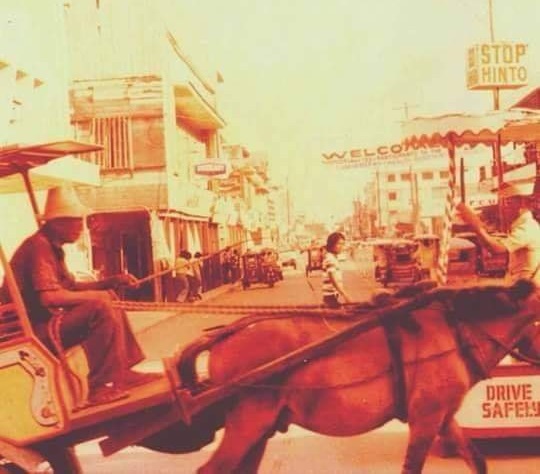
In the late 90’s towards the early 2000’s, pansiteria’s innovated further by introducing the “special” and “super special” menu options, thereby “demoting” the batil-patung option as the basic order. The poached egg and the egg-drop soup became default aspects of the pansit instead of being optional, as the special and super came with either larger servings or additional toppings. These three menu options were more or less priced respectively as 15, 18, and 20 pesos. It could have been due to this gradual event that the practice of using the name batil-patung to refer to the actual pansit dish itself finally became the social norm in Tuguegarao, as the basic order was later referred to as “regular”.
More recent pansiterias would later come up with gimmicks that expanded these traditional menu of serving sizes. The takeout sizes good for sharing this time utilized the bilao; although now rarely, people may still opt to bring their own kalderu when buying takeouts.
The pansit of the ‘90s can be identified as being the “true batil-patung”. This was probably the time when some pansiterias made pork liver as a standard ingredient. Pork liver, in the ‘70s started as an extra or additional ingredient (“add-on” in modern colloquial speech) brought by customers and given to the cook to be added to the dish. Present pansiterias that were rooted in that decade like Cherry’s and Bunagan’s have still not made liver as a default ingredient, however, they and their surviving contemporaries eventually adopted the “batil” and “patung” default template.
A similar story may be said of the default calamares toppings one may encounter in some pansiterias today, the origin of which may be connected to the customers’ practice in the ‘90s where they brought their own squid to serve as an additional ingredient. This customization is now an inherent aspect of Tuguegarao pansit culture and persists to this day.
Vegetables were not limited to mung bean sprouts; cabbage and carrots have long become common, and in a few places, celery. These and the addition of pork liver more or less defined the “base” or “old school” form of the batil-patung as it is known today, which lacks the various permanent add-ons that became a widespread trend in the 2000s. Although around the turn of the millennium, novel toppings were already being slowly introduced, such as sliced hotdogs and ground chicharron as seen in Budyok’s and Gretchen’s.
Among the pansiterias that boomed in the ‘80s were Bel’s, Dodie’s/Sinta’s (the owner, Dodie, worked previously at Baquiran’s), and Try Me to name a few. Although some of the following were founded during the last decade, the 90’s saw the rise of Tuddao’s, Roadside, Amigos, Horno, and the short-lived but highly popular 629.
Besides these, there were “pansit food courts” inside the Don Domingo public market, and the Plasa itself. Darauay’s, which also had a spot inside the Plasa, eventually branched out into Bunagan’s in Buntun and Nang’s in Ugac Sur. Tuddao’s also literally did the same, opening a few branches in its own name within the city proper; this business practice was emulated by later hard-selling pansiterias in the 2000s.
2000s and beyond
This period marks the rapid diversification and modification of the base batil-patung through the higher order sizes. Lechon karahay and chorizo de bilbao were already popular “special” toppings, however, many pansiterias innovated further by introducing more unorthodox ingredients. Fefang’s (whose first cook reportedly came from the popular Big Star) was one, if not the first to make use of Tuguegarao longanisas, while Jairon’s popularized chicharong bulaklak. Jocris started the calamares trend, Shirley’s, ox brain and nerves, and Billy Jack’s, balut.
Others would later add chicken skin, pork guts, meat loaves, embutido, and shrimp. Jomar’s modified their recipe by using chicken liver and hard-boiling their egg topping. Vegetables were not spared by the “evolution spike”; some added leeks and chicharo (snow peas), while some experimented with bell pepper, broccoli, and cauliflower. This time also saw the rediscovery of the luffa, which, again, started as a customized add-on.
Other popular pansiterias that emerged during this time include J-ren’s, Lamud’s, AM-PM, Tagums, and Eva’s. While some pansiterias went with this business trend, others continued their tested and timeless simplicity.
In the late 2010s to the present, newcomers to the industry were Gudvibes, Aaleyah’s, Riverbank, Tambayan, RK, and many more, bringing the estimated number of pansiterias in the city up to around two hundred. A single order of pansit nowadays costs from an average of 80 to more or less 120 pesos.
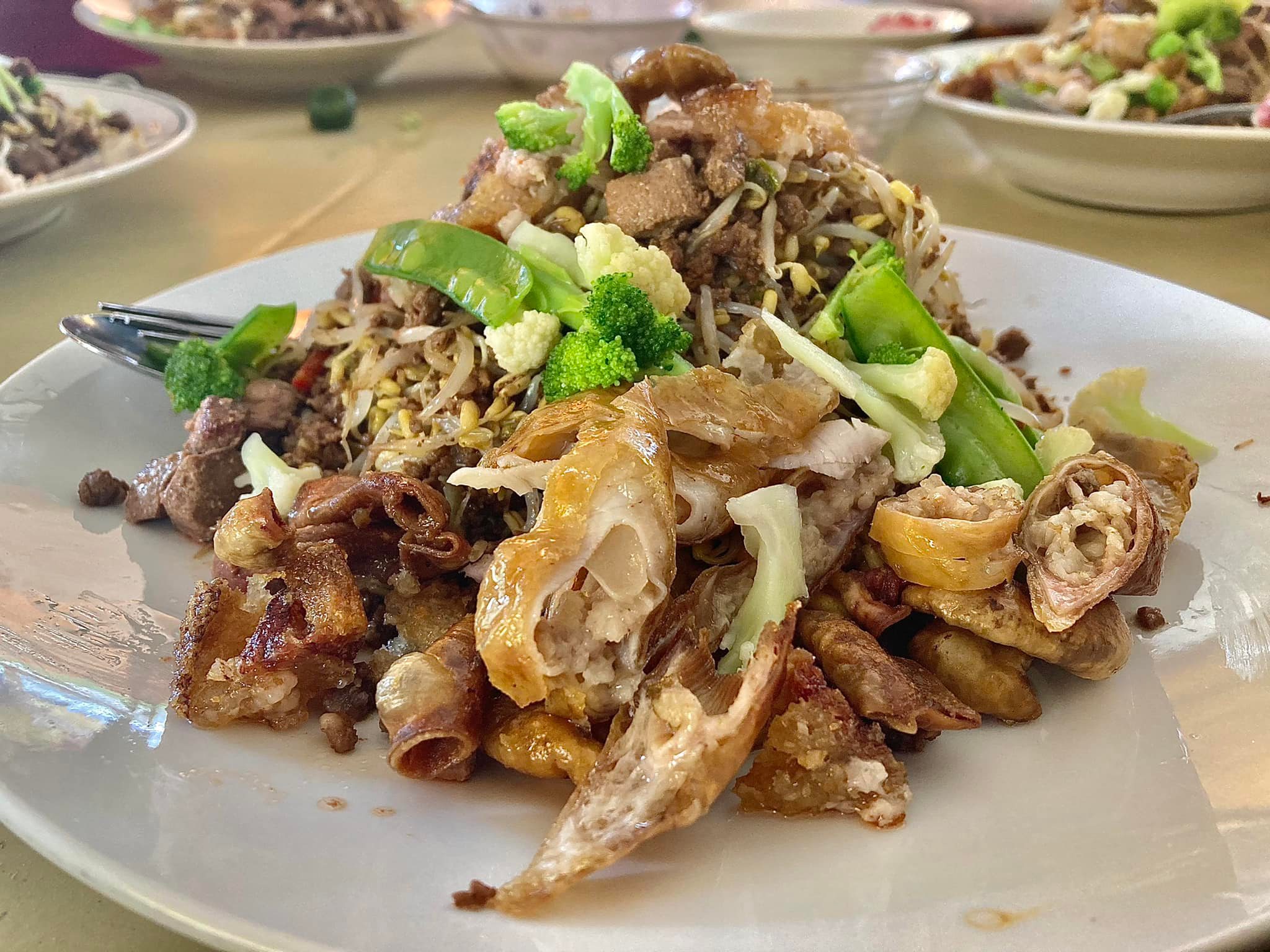
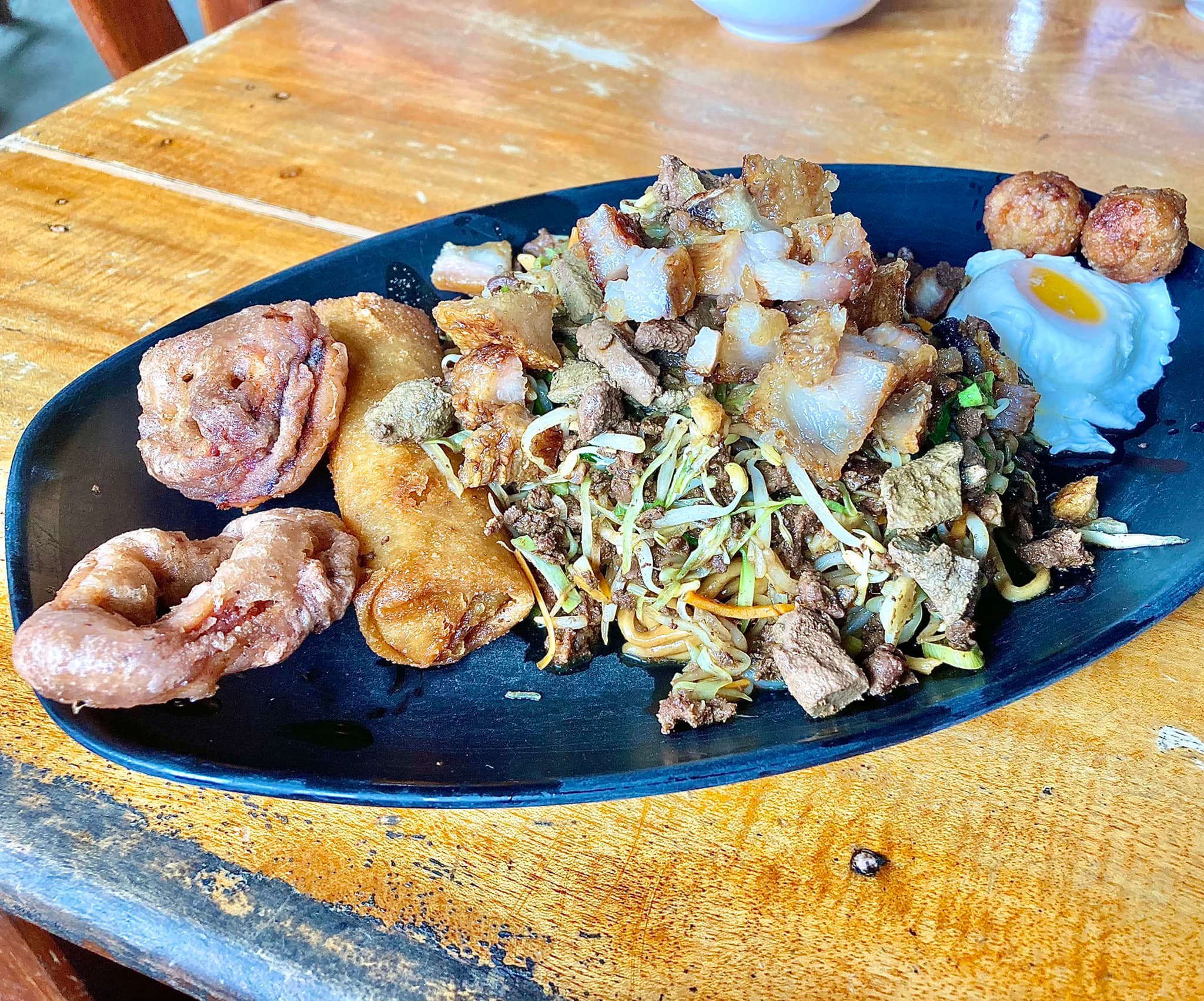
The Linao-Annafunan area is presently notable for its concentration of pansiterias that combine different types of “heart-stopping” (“putok-batok”) toppings such as overloaded or whole slabs of deep-fried pork belly, chicharong bulaklak, and the addition of bola-bola, and lumpiang shanghai or lumpiang gulay — Paps Ace’s, Felicula’s, Ito’s, Jed’s, Minda’s, Piolo’s to name a few. Available usually in upper order sizes from 100 to 150 pesos, this is the current trend being emulated by many new pansiterias today. Nonetheless, some of these pansiterias’ lower order sizes lack these rich add-ons, mimicking the recipe style of old.
The widespread experimentation of this period also eventually gave birth to the “Cabagan-patung” sometime between the end of the 2000s and the start of the 2010s. Its apparent progenitor was the now defunct Angelo’s, formerly in Ugac Norte, which was followed by Del’s and countless others soon after. Pansit Cabagan found its way to Tuguegarao and was popularized through the branching out of Isabela-based Felicita’s sometime in the late ‘90s or early 2000s. The eventual fusion of the two pansit dishes was inevitable. Cabagan-patung, as some call it today, is basically Cabagan miki, topped with batil-patung ingredients such as the poached egg, ground cara-beef, and pork liver, etc., and served with the batil.
It was during this decade that the rapid spread of batil-patung pansiterias outside Tuguegarao came about. Presently, pansit batil-patung can be sampled in few pansiterias across Cagayan and the rest of Region 2, with some establishments in Metro Manila. Usually, the authenticity of these pansiterias is an issue especially among native Tuguegaraoenos. In order to truly replicate the dish in terms of flavor, one has to acquire authentic ingredients, particularly cara-beef, the Tuguegarao miki and the Malabon Toyo.
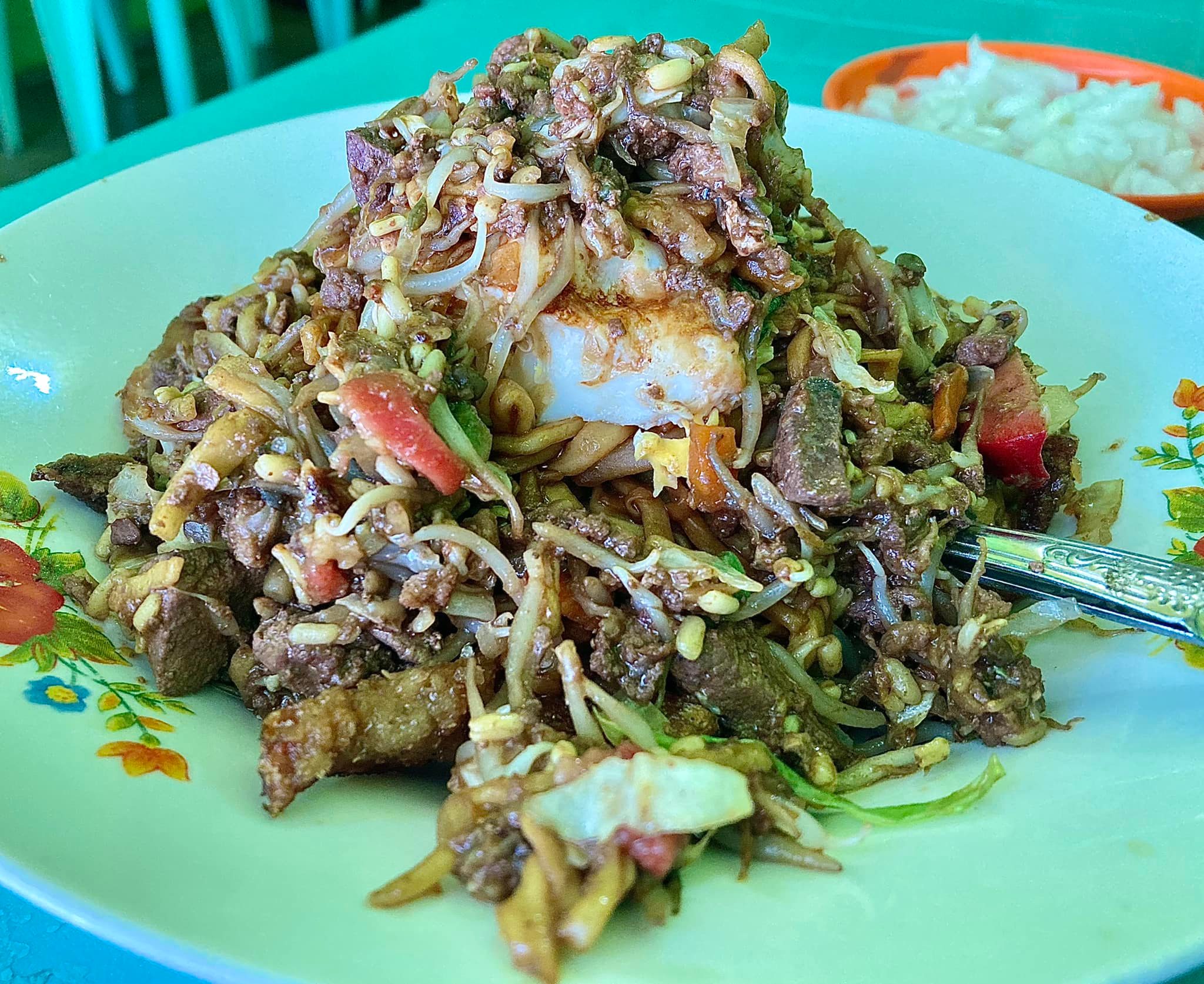

Old school and new school
Despite the course of the cultural and culinary development undertaken by the pansit batil-patung, there are those few pansiterias in Tuguegarao that have stuck to tradition. These pansiterias are mostly the descendants of the pioneers of old, having persisted and competed with their modern counterparts, while most of their contemporaries ceased to be, their memories fading into oblivion as their generation passes unless documented.
The Sorianos of the ‘60s kept their family business alive and now operate the Long Life/R.A. Soriano’s pansiteria in Tanza. One of their original cooks also started his own, Jeff’s. Max pansiteria of the 70’s was renamed as Escobar pansiteria, and still operates in the former pansit hub, “ta likuk na Philippine Lumber”. Cherry’s is still lively as ever, with the owner Miding Mabatan’s descendants branching out to establish Sol’s in Annafunan and Manang Chit’s in Ugac Norte. Customers in Bunagan’s can still reach full house capacity at times; Dodie’s/Sinta’s has opened a few branches.
Most of them, after all the drastic changes the batil-patung has undergone, have kept their recipe as close as possible to the traditional “base version”. This resulted in them being called “old school” to distinguish them from the modern ones. Their qualities are consistent amongst each other — they are simple (no add-ons), only differ slightly, and the flavors are similar and more importantly, nostalgic to many adult Tuguegarao natives. Win-Mae’s along Diversion Road, reportedly also has roots in the olden days; they have one of the simplest recipes consisting only of noodles, the egg and carabeef, and chopped up lechon.
So what can we learn from this short trip through history? Many cultural aspects inherent to an ethnic group/s or a province are protected, particularly by an institution, in such a way that it cannot be appropriated without offense. Most of these are deeply grounded in tradition, and remain unchanged for ages.
The batil-patung, as a prominent cultural aspect, which serves as a symbol of ethnic or municipal identity, gives pride and confidence to their bearers— the people of Tuguegarao. Perhaps, the pansit may require a sort of standardization, a definition of what is its “traditional form”, in order for it to be preserved or protected.
Though culture is ever shifting, dilution of what is traditional by outside influences may also obscure a cultural symbol and lessen its value. How can one fully connect his or her own identity to such an icon? Otherwise, should Tuguegaraoeños totally embrace continuous change by accepting the seemingly growing putok-batok image that could become permanently associated with the batil-patung? Or, will the people highlight the present duality of recipes?
There is so much to discuss, and so much to discover. It is through social science that we can study more about the material culture of Tuguegarao and its people, and discover and understand its significance. This feature story is a mere tip of a massive iceberg, which is ripe for expansion into a formal academic research paper in the future. (OTB/JKC PIA Tuguegarao City)



